In this step-by-step tutorial, you’ll learn how to cut butternut squash for comforting soups, stews, chilis, and more! From peeling and cutting to important safety tips, this guide has everything covered!
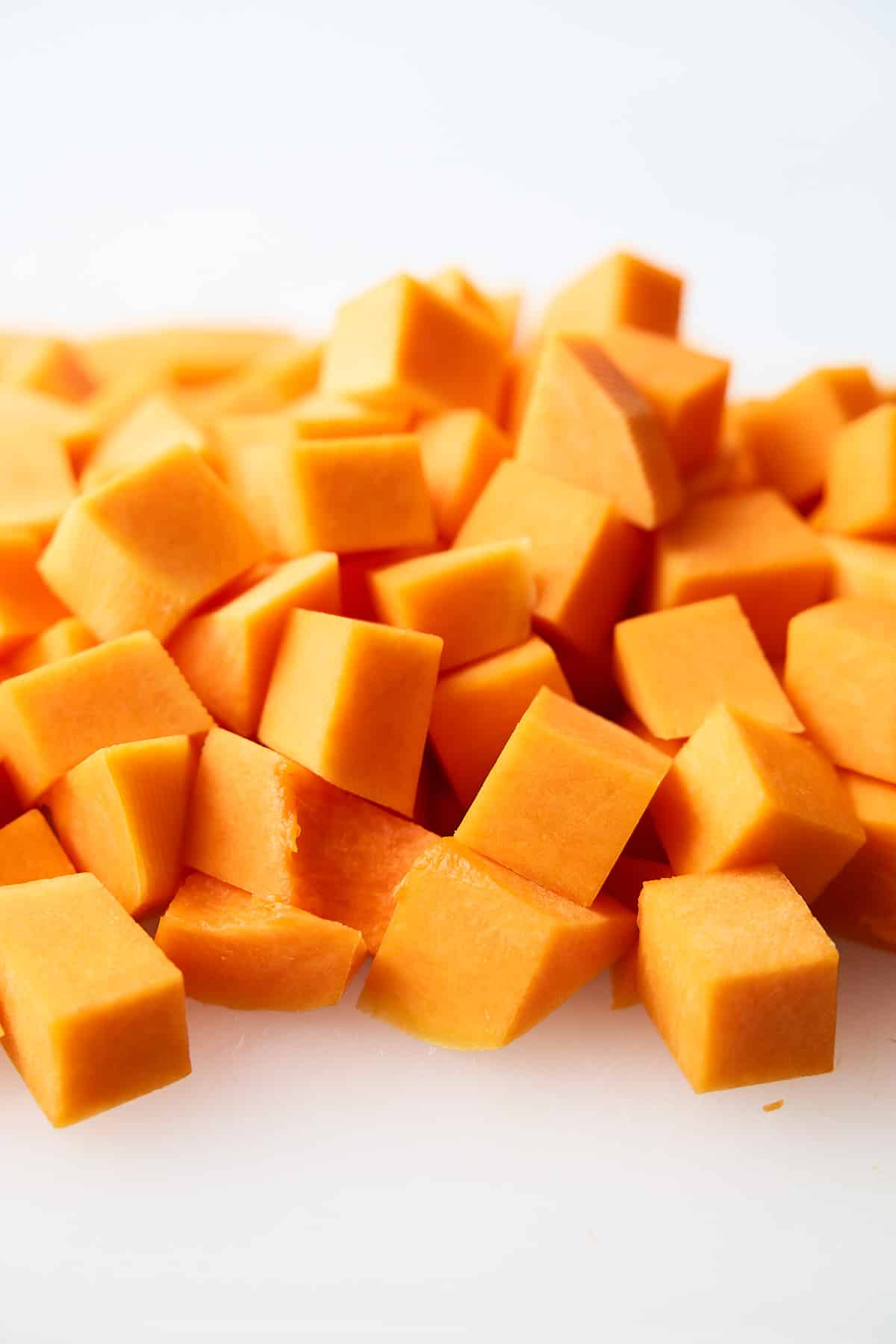
What is Butternut Squash?
Butternut squash is a type of winter squash with a very thick skin and firm flesh, making it perfect for storing over many months. Usually, it’s grown during the summer, harvested in the fall, and eaten during the wintertime.
However, before you dig into this sweet, creamy, and downright delectable vegetable, you need to know how to prepare it safely by learning the basic concepts of peeling and cutting it.
For more information about butternut squash, check out my butternut squash 101.
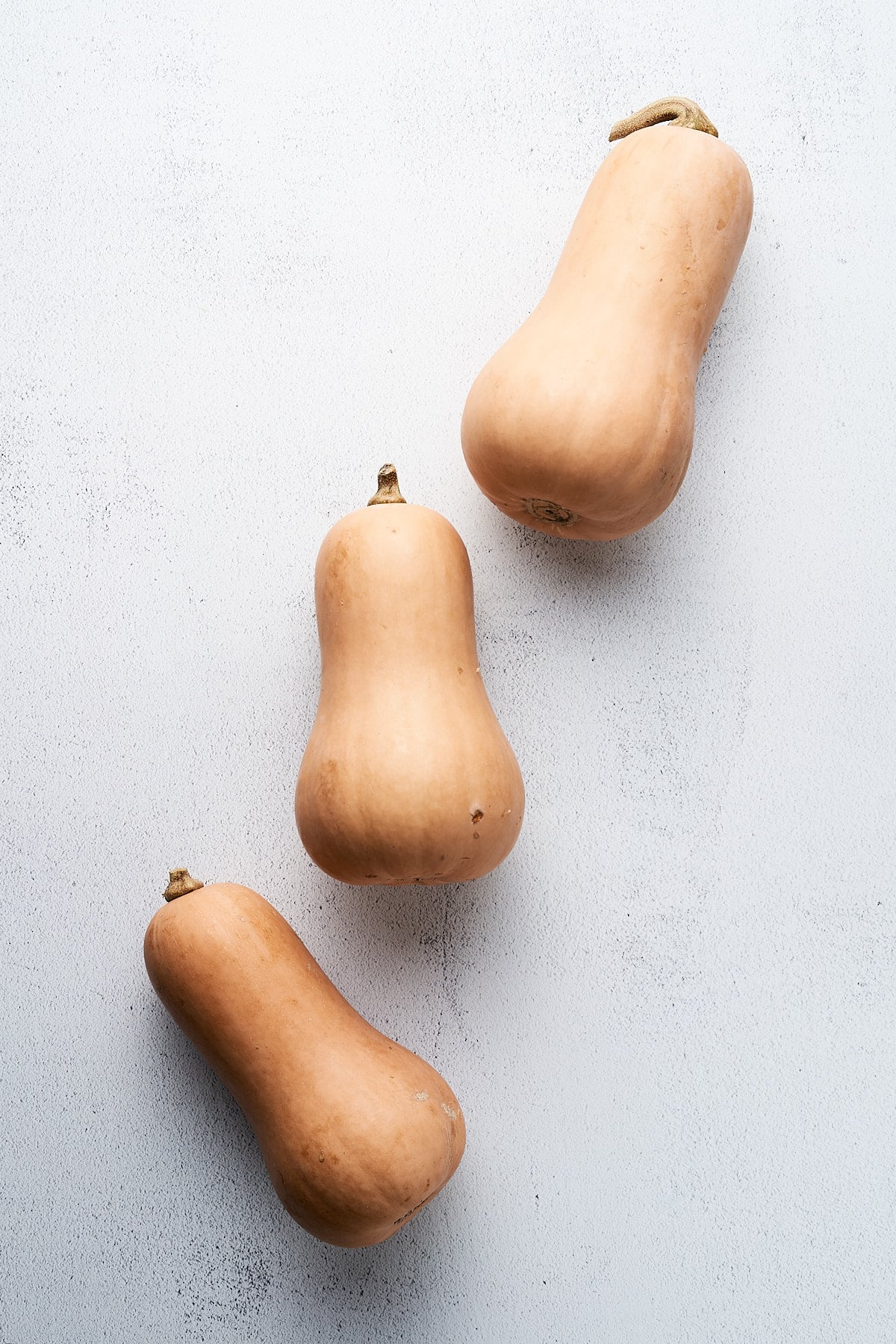
How to Cut Butternut Squash
Learn how to cut butternut squash for all sorts of recipes like tacos, harvest bowls, and more. It can seem like a cumbersome vegetable to prepare, but I promise it will seem simple after reading these steps!
Prefer to watch instead of read?
Trim & peel
Using a sharpened chef’s knife, slice both ends of the butternut squash off. Make sure you keep a firm grasp on the squash with your non-dominant hand.
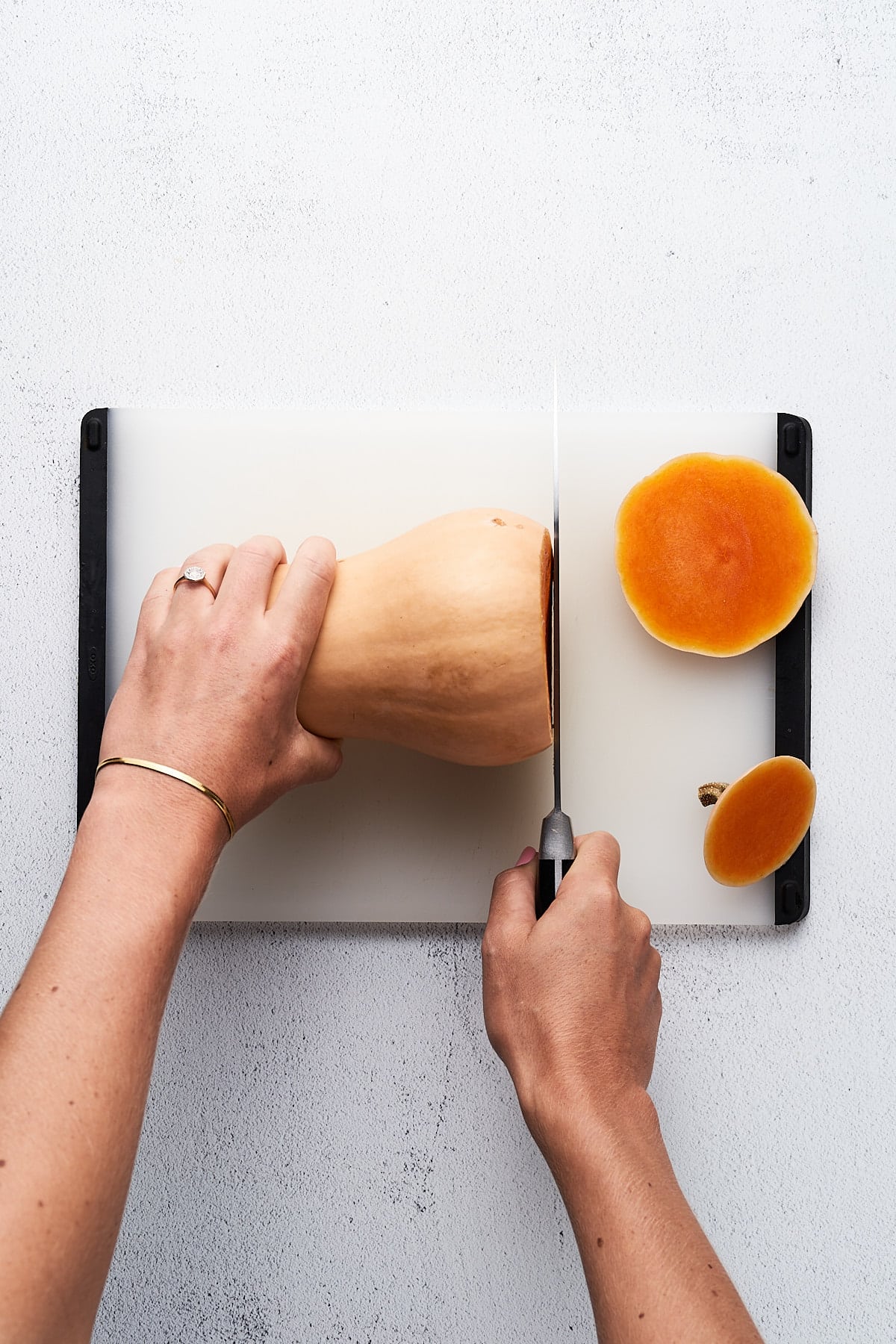
Remove the outer beige and white skin with a vegetable peeler, ensuring you are peeling away from your body. Once the squash is fully peeled, cut it in half short ways (see below right photo).
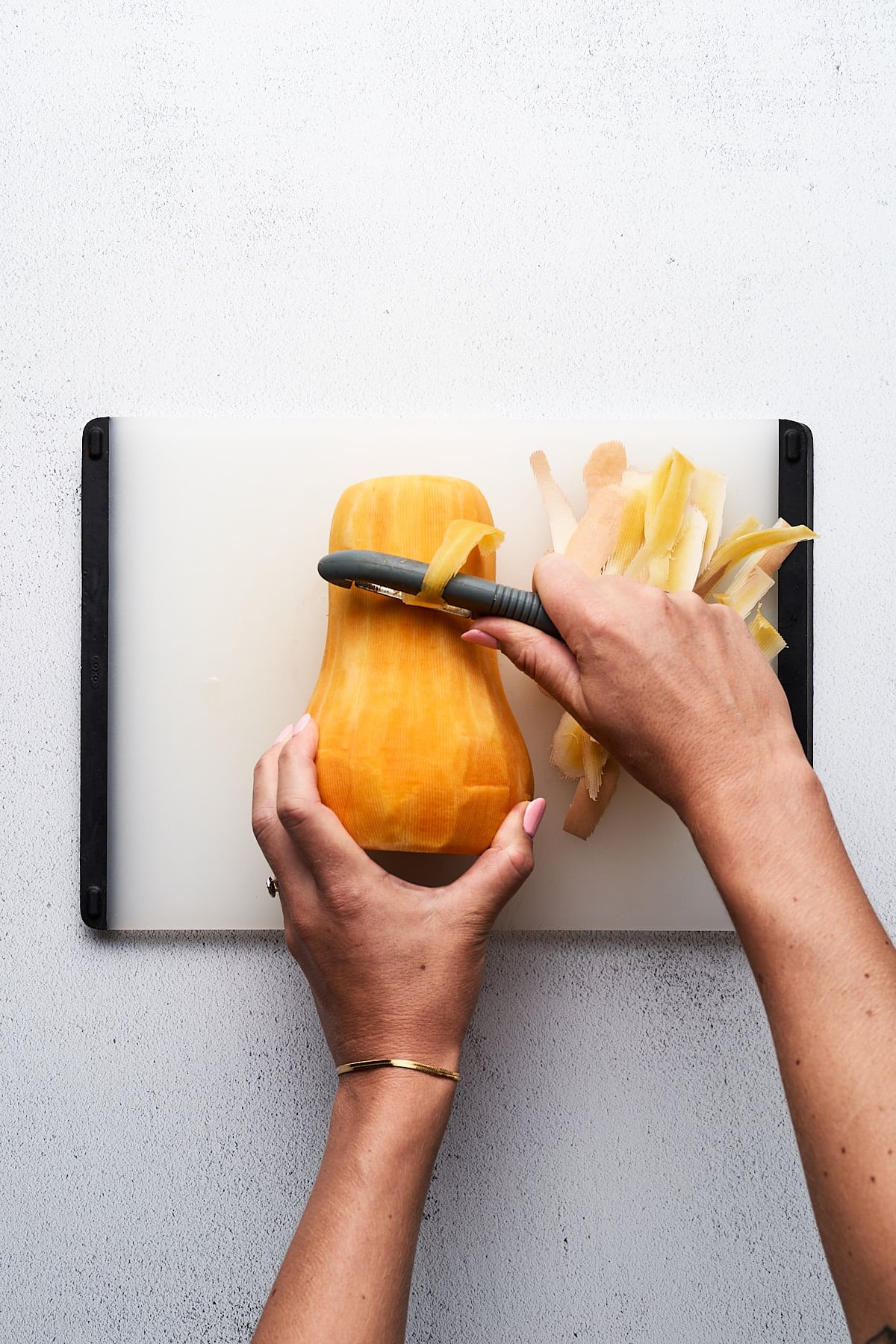
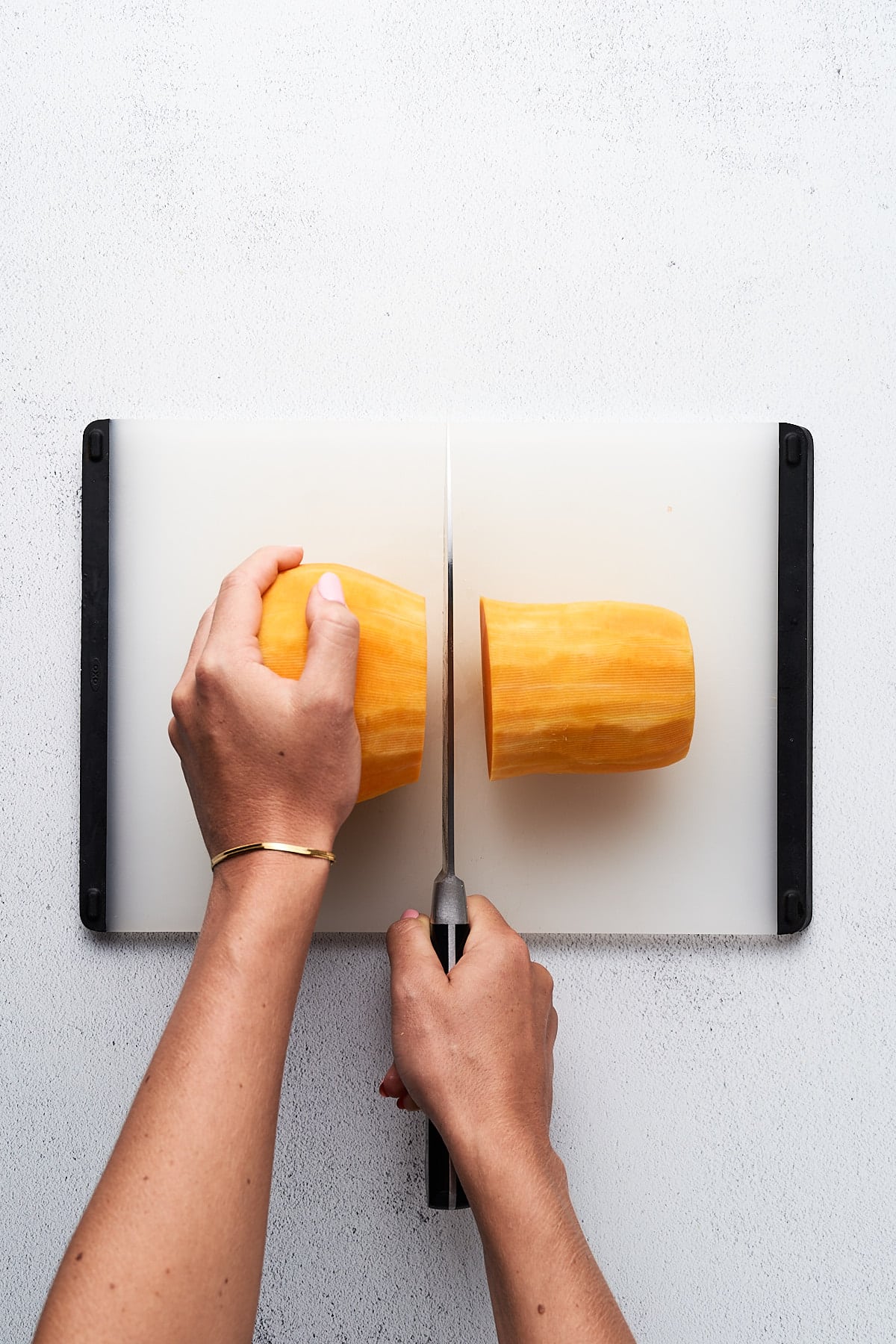
Cut Half #1
Stand the thin half of the squash upright, then slice it into slabs (below left). Lay each slab down on the flat side, and cut it lengthwise (below right).
Rotate the pieces 90 degrees, and cut them into cubes the size of your choosing. Depending on the recipe you’re making, you may need to cut them larger or smaller.
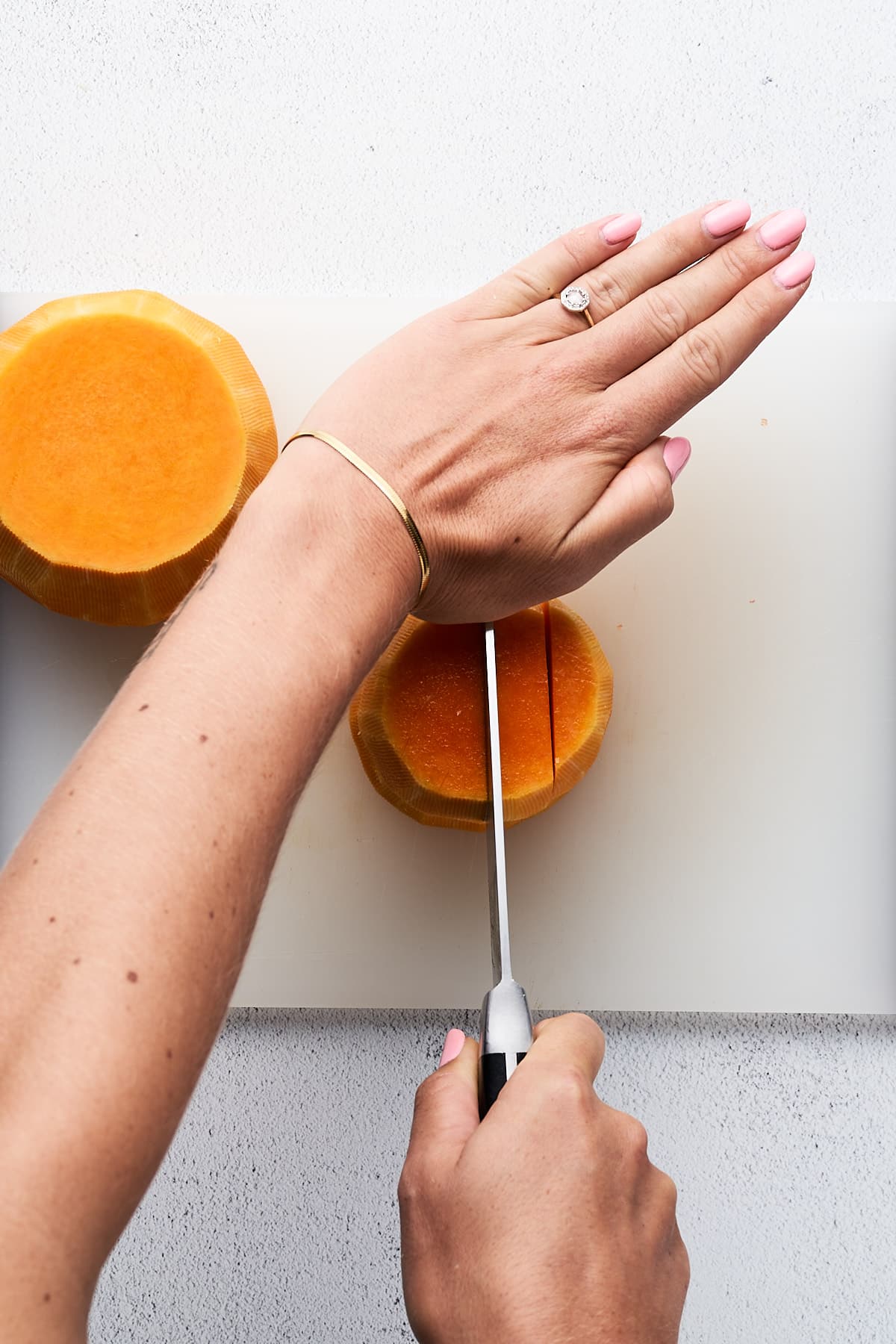
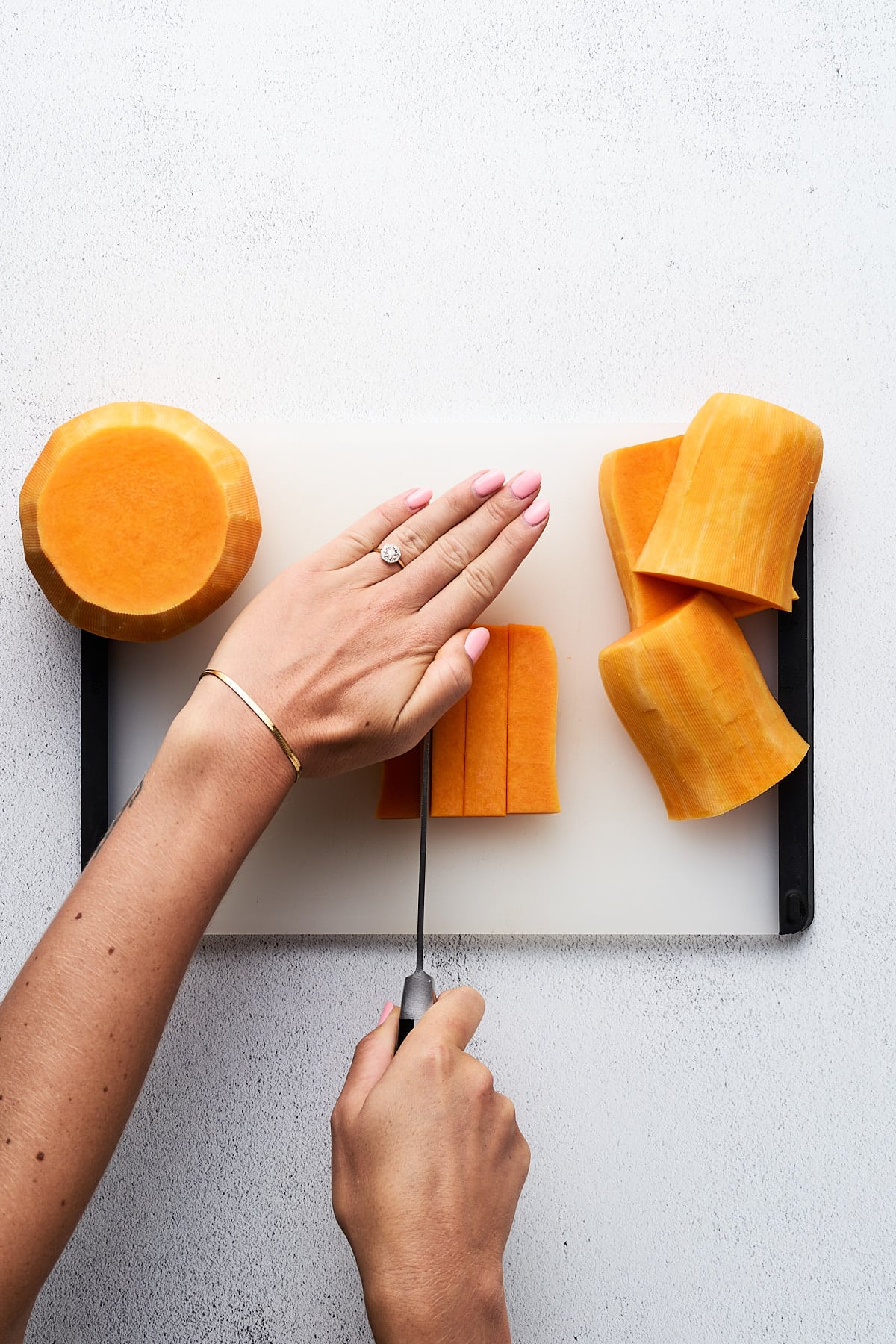
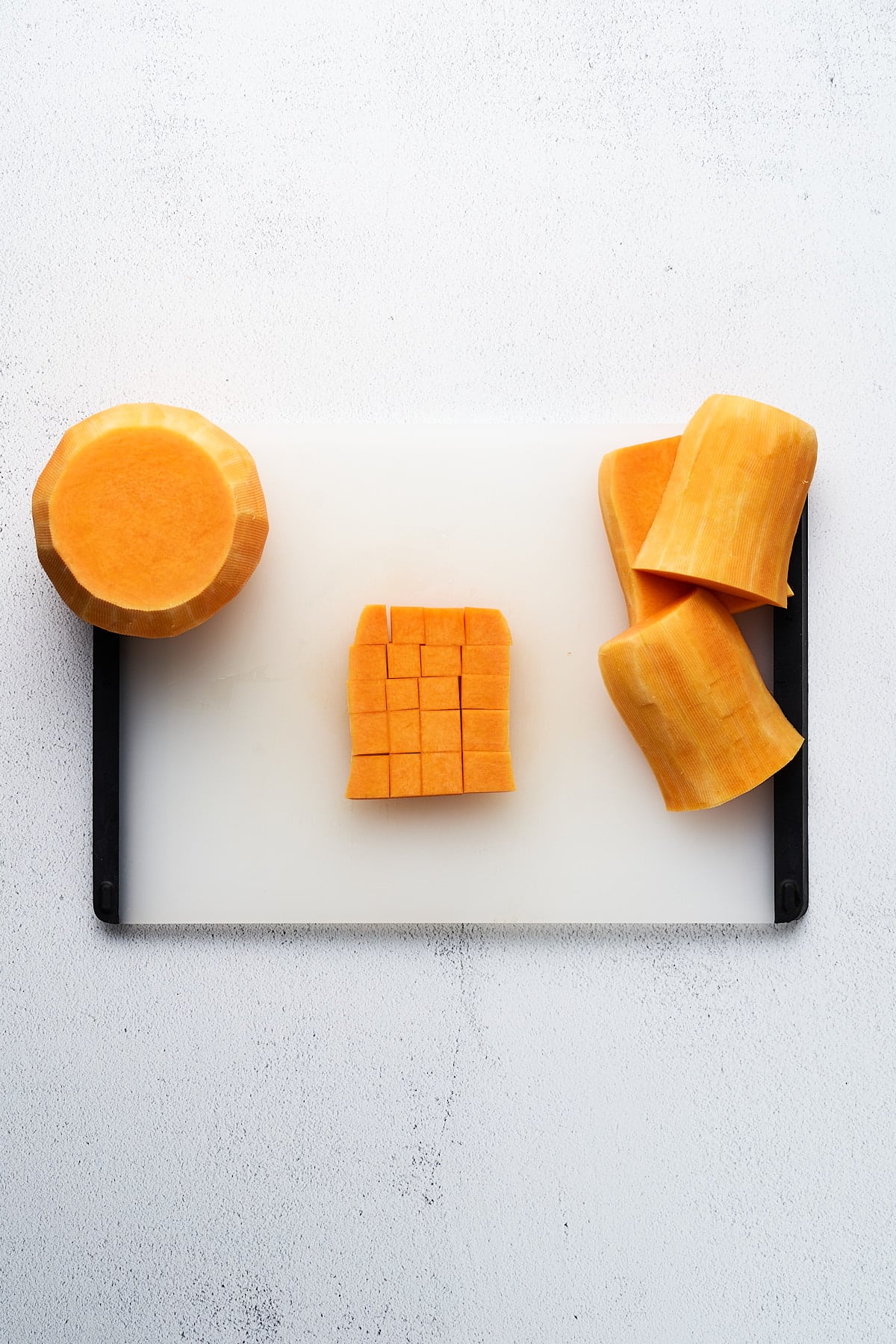
Cut Half #2
Similar to the first half, stand the wider half upright. Cut it in half, then scoop the seeds out of each side. Compost them, or wash them and make roasted squash seeds! Toss the seeds in a little olive oil and seasonings, then bake them at 325 degrees F for about 10-15 minutes, or until golden.
Flip the seeded squash halves over onto the flat side, and cut them into half moons. Lay each slice down flat, then cut it into cubes! If need be, slice the thicker half-moons in half lengthwise before cubing them.

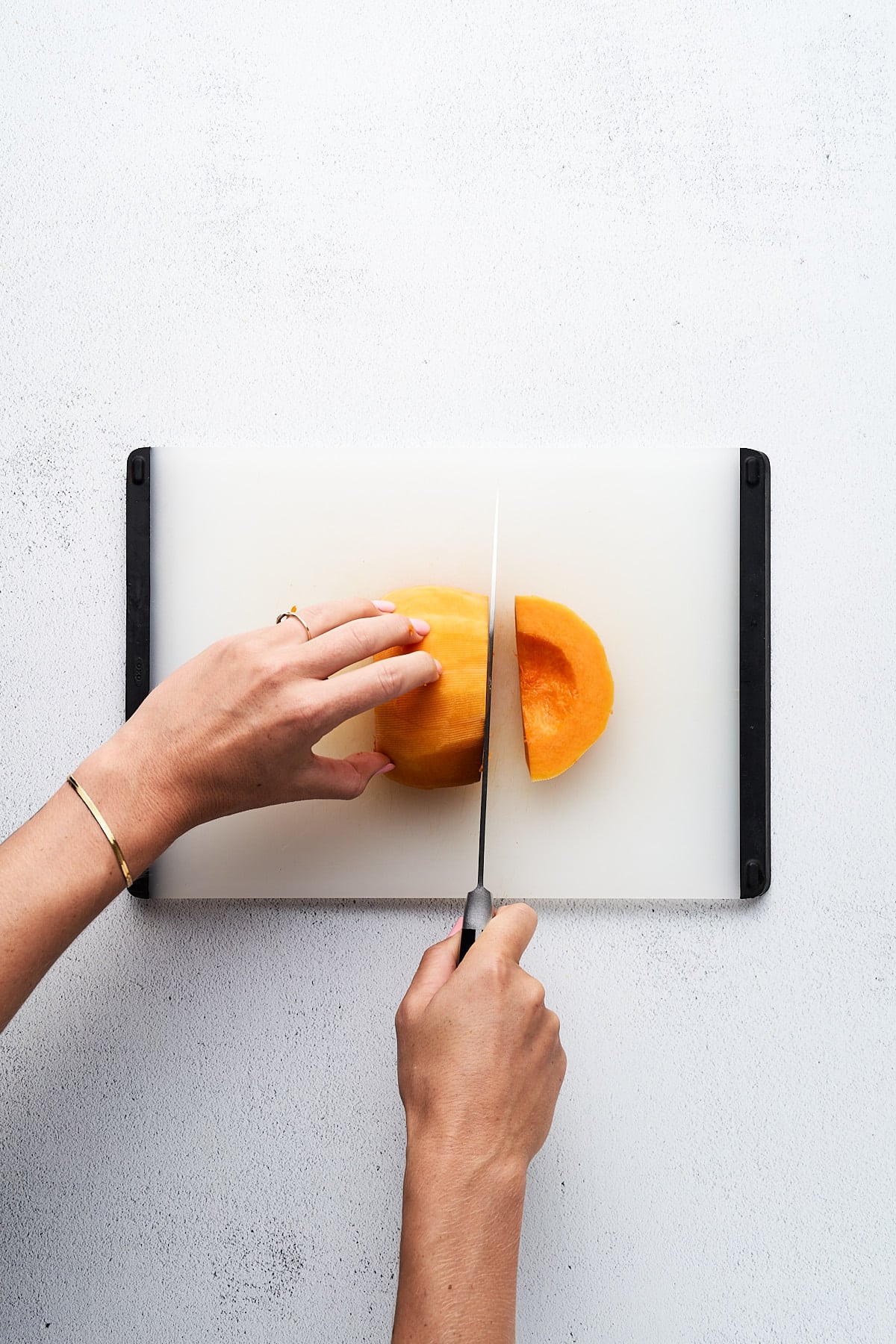
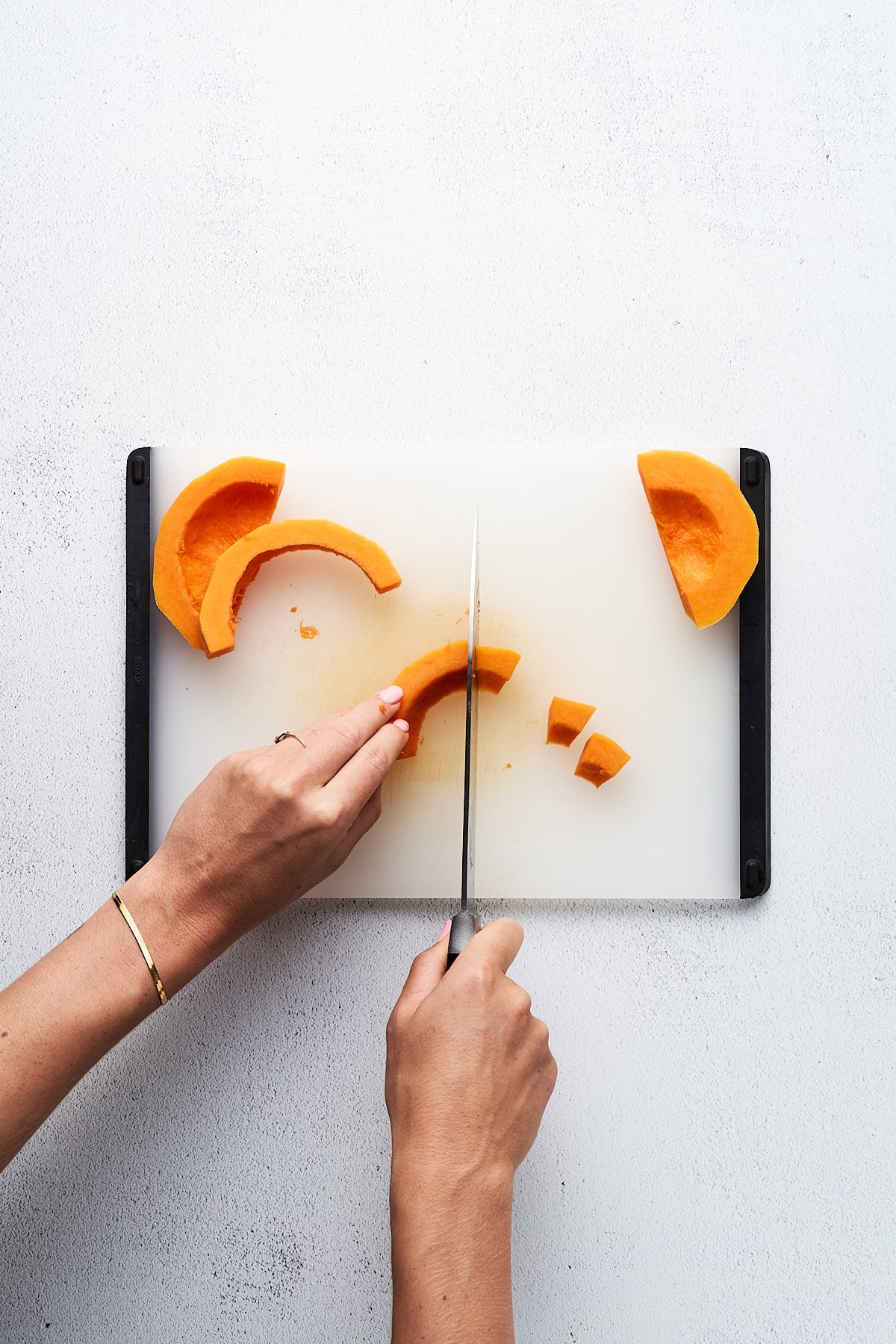
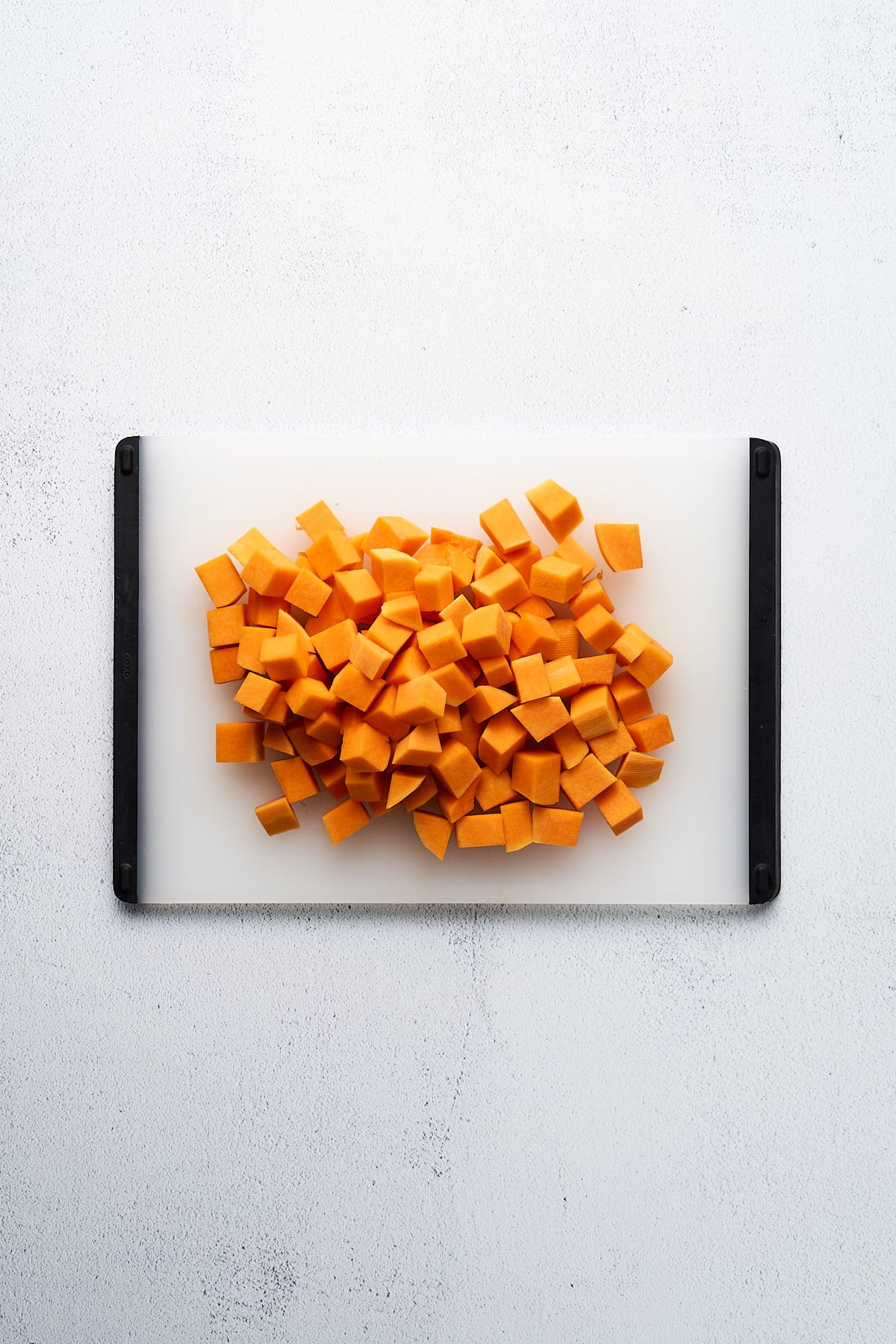
Safety Tips for cutting butternut squash
Before working with butternut squash, remember the following safety tips to prevent any trips to the emergency room:
- Choose an appropriate knife: Butternut squash is quite solid and slightly sticky when it’s raw. Choose a large chef’s knife that is freshly sharpened before starting.
- Avoid excess pressure on the knife: If you are having to use too much pressure to cut the butternut squash, your knife is not large enough or sharp enough. Use a larger knife, or make sure you have properly sharpened it.
- Keep a firm grasp: When you are trimming the ends and peeling the butternut squash, hold it firmly in place with your non-dominant hand. When you start cutting into it, make sure that whichever piece you are cutting is flat side down.
- Cut away from you: To prevent any nicked fingers, always peel and cut butternut squash away from your body.
- Use a sturdy cutting board: You don’t want your cutting board slipping all over the place while you’re trying to cut the squash! Use a heavy cutting board, or place a wet paper towel underneath to prevent it from moving.
How to Use Butternut Squash
After learning how to cut butternut squash, test it out in one of these tasty butternut squash recipes:
- Roasted butternut chickpea wraps
- Fall salad with pomegranate vinaigrette
- Butternut squash mac and cheese
- Butternut beet and ricotta gallate
- Curried butternut squash soup
Storing Butternut Squash
Storing butternut squash could not be easier. Whether it’s whole or cut up, here’s what to do:
- Room temperature: Keep whole butternut squash in a cool, dark place for up to 2 months. The ideal temperature is between 50-60 degrees F.
- Fridge: If you’ve already cut up your butternut squash, store it in an airtight container in the fridge for up to 1 week. Storing whole butternut squash in the refrigerator may affect the overall texture and is not recommended.
- Freezer: Peel and cut the butternut squash, then add it to a freezer-safe bag or container and freeze for up to 6 months.
How to Pick the Perfect butternut squash
Since butternut squash is a winter squash, it’s quite durable. However, it may taste bland if it’s underripe and dry or mushy if it’s overripe. with that said, here are some key pointers to help you choose the very best butternut squash:
- Skin: Look for butternut squash with smooth, firm, and matte skin. Avoid those with deep cuts, discolorations, or soft spots. Check that the overall color is dark beige (a light spot is okay, and just indicates where the squash laid as it grew).
- Weight: Perfectly ripe butternut squash should feel heavy for its size. Pick a few up to determine the average weight, then make your final decision!
- Stem: Check that stem of the butternut squash is firm to the touch. An intact stem will help your squash last longer. Also, the color of the stem should appear deep brown.
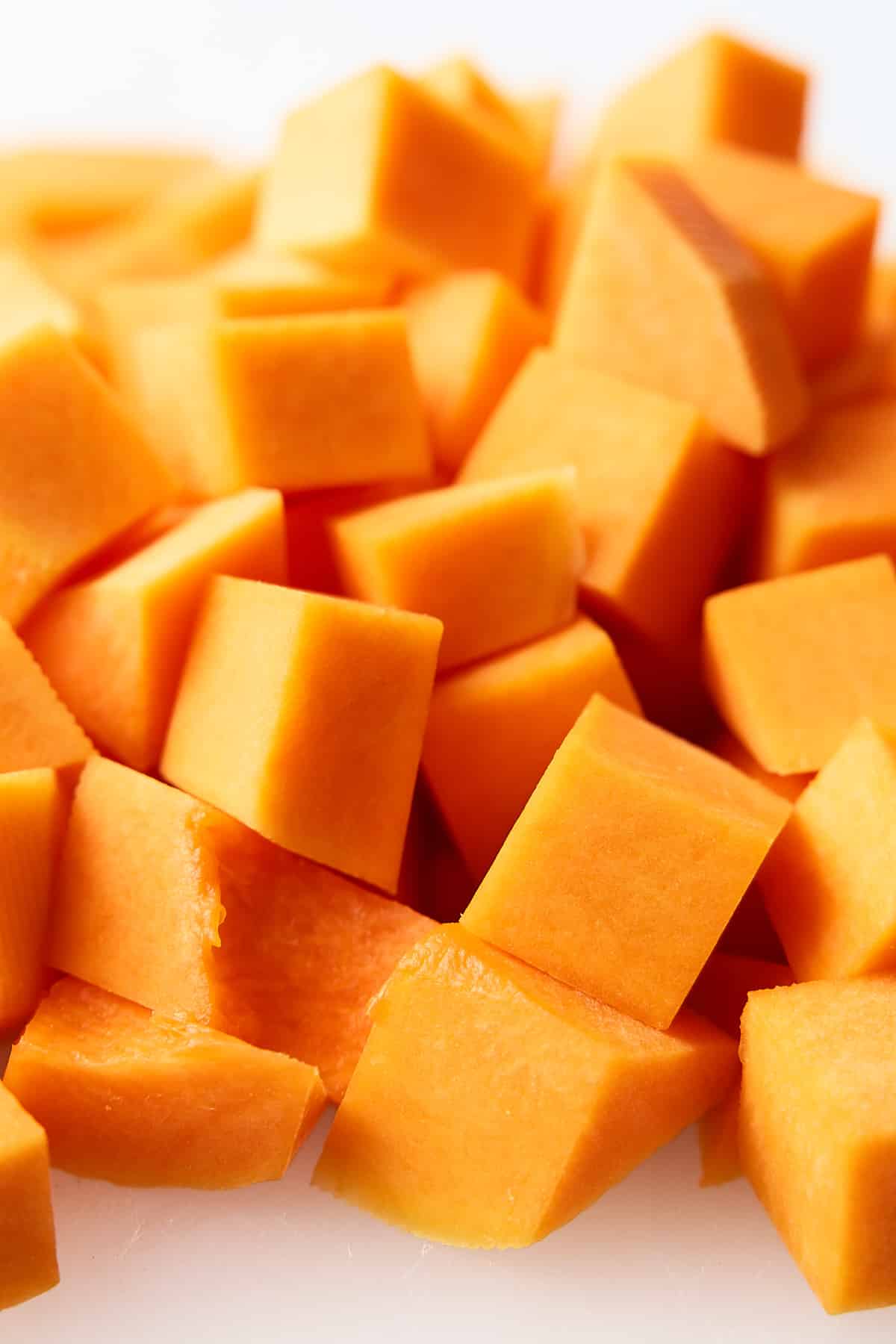
Butternut Squash FAQs
No, you do not have to peel butternut squash as the skin is edible. However, it can be quite tough, so it’s typically recommended to peel it.
Butternut squash can be difficult to cut if you don’t have the proper tools. It’s best to use a very sharp chef’s knife and a sturdy cutting board. To make it softer, you can score the outside and microwave it before cutting.
Yes, you can peel butternut squash without a vegetable peeler. Once you’ve cut it in half, stand it up, and cut down the sides with a knife to remove the skin.
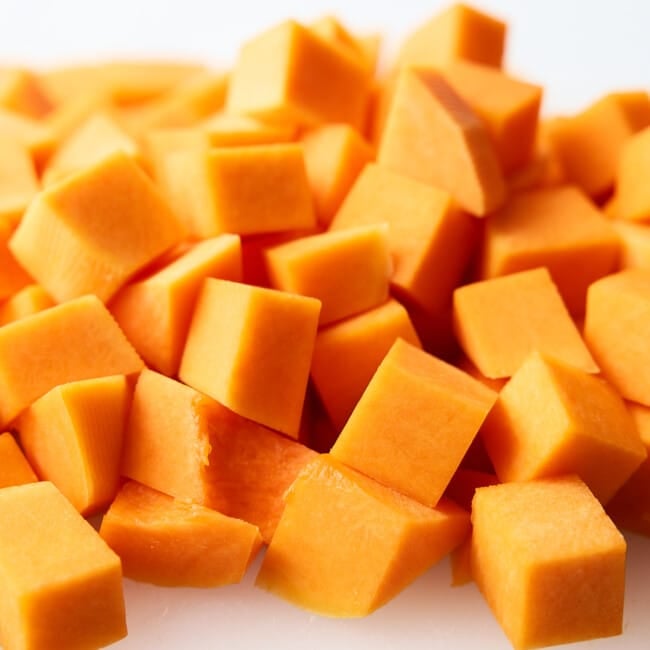
Ingredients
- 1 butternut squash
Instructions
- Trim: Using a sharpened chef’s knife, slice both ends of the butternut squash off. Make sure you keep a firm grasp on the squash with your non-dominant hand.
- Peel: Remove the outer beige and white skin with a vegetable peeler, ensuring you are peeling away from your body.
- Halve: Cut it in half hamburger style.
- Half 1: Stand the thin half of the squash upright, then slice it into slabs. Lay each slab down on the flat side, and cut it lengthwise. Rotate the pieces 90 degrees, and cut them into cubes the size of your choosing.
- Half 2: Stand the wider half upright. Cut it in half, then scoop the seeds out of each side. Flip the seeded squash halves over onto the flat side, and cut them into half moons. Lay each slice down flat, then cut it into cubes!
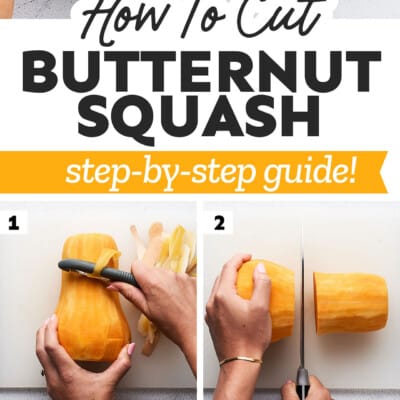
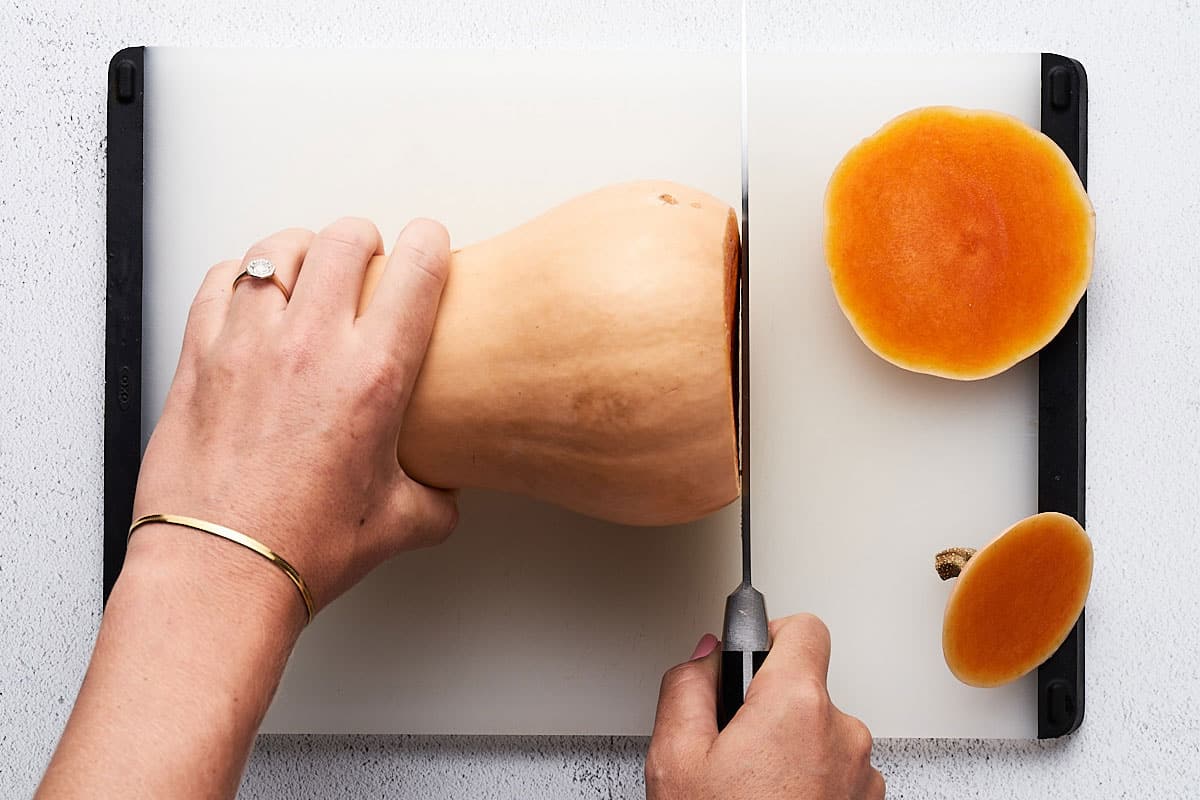
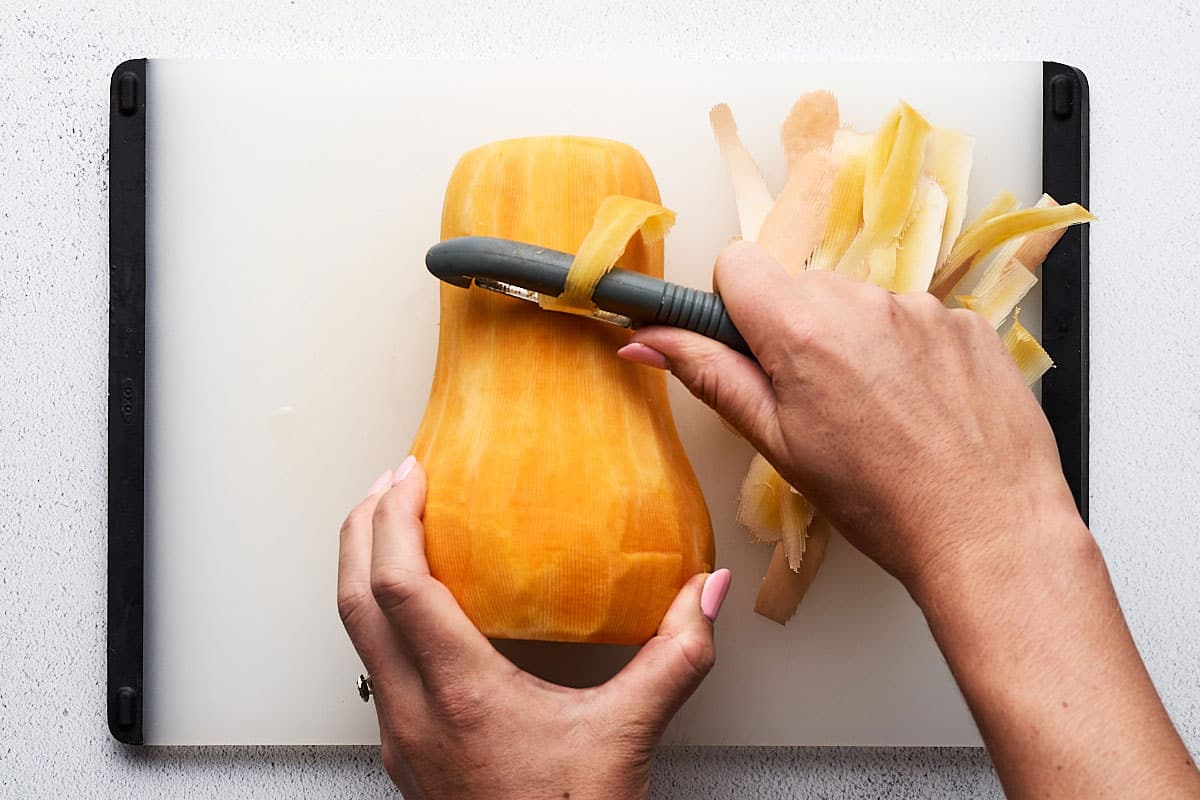
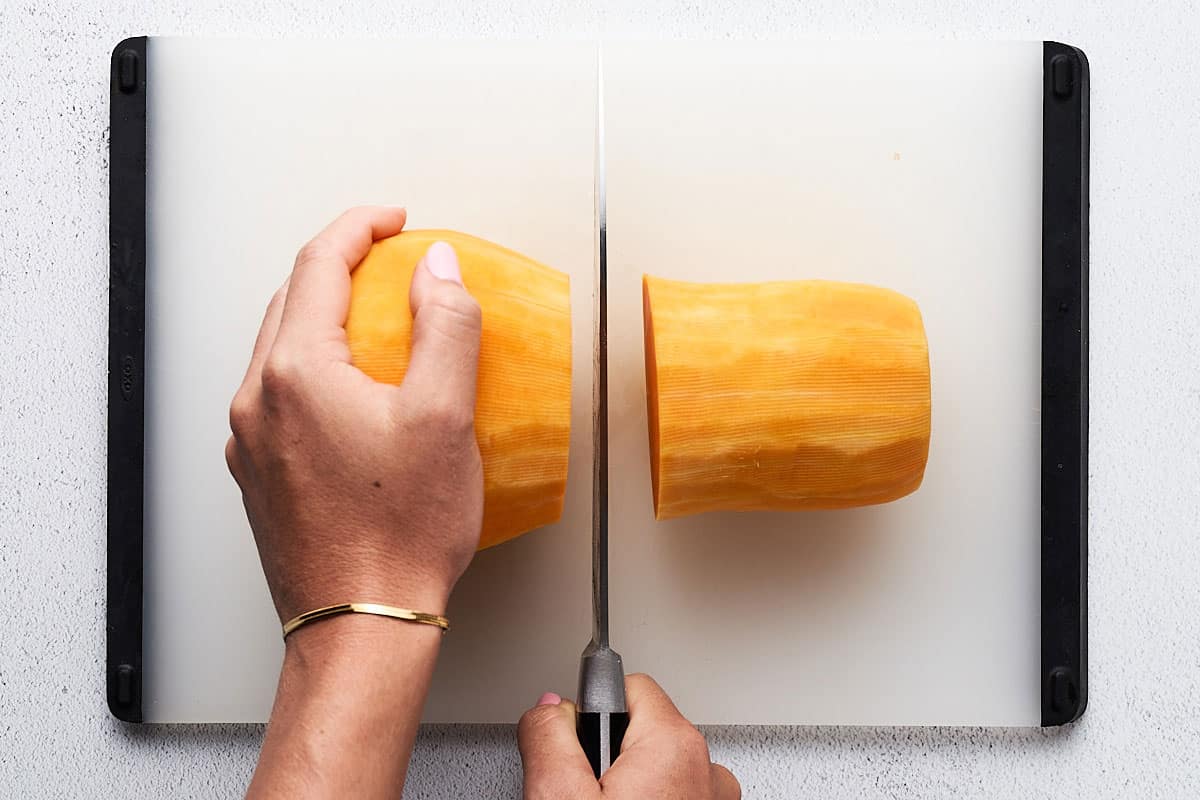
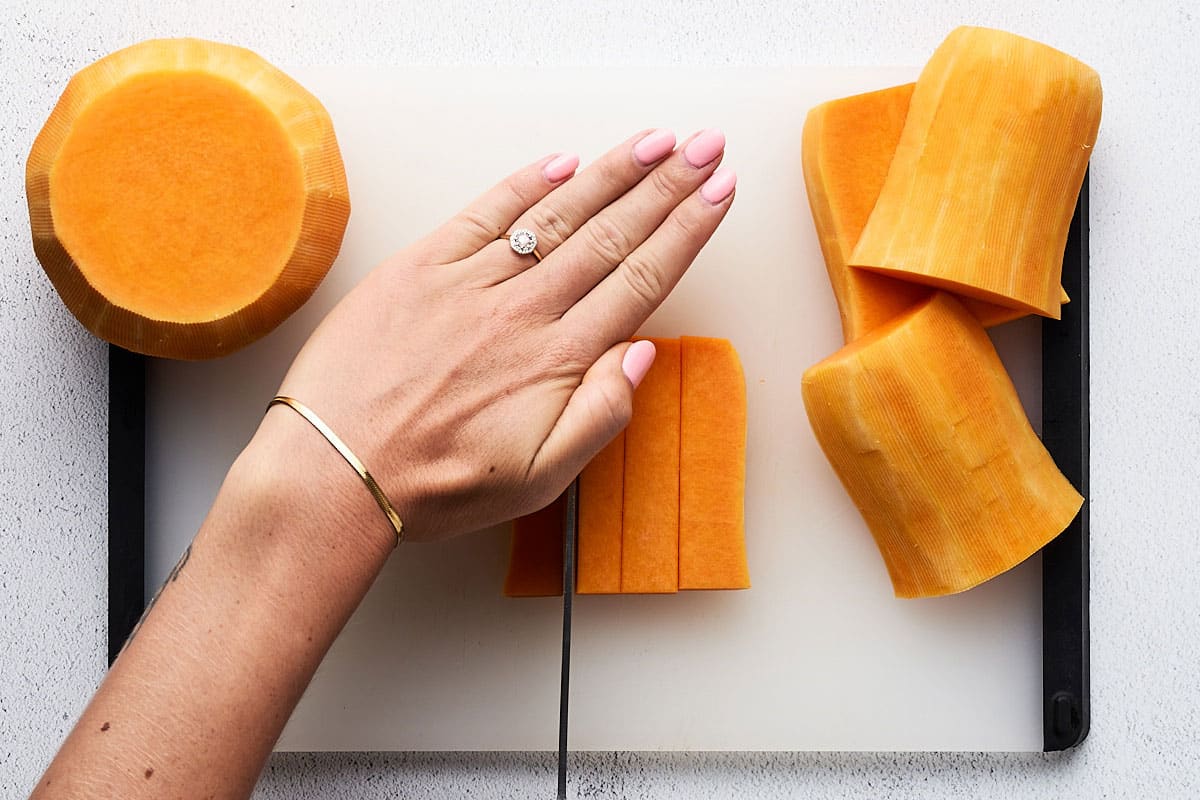
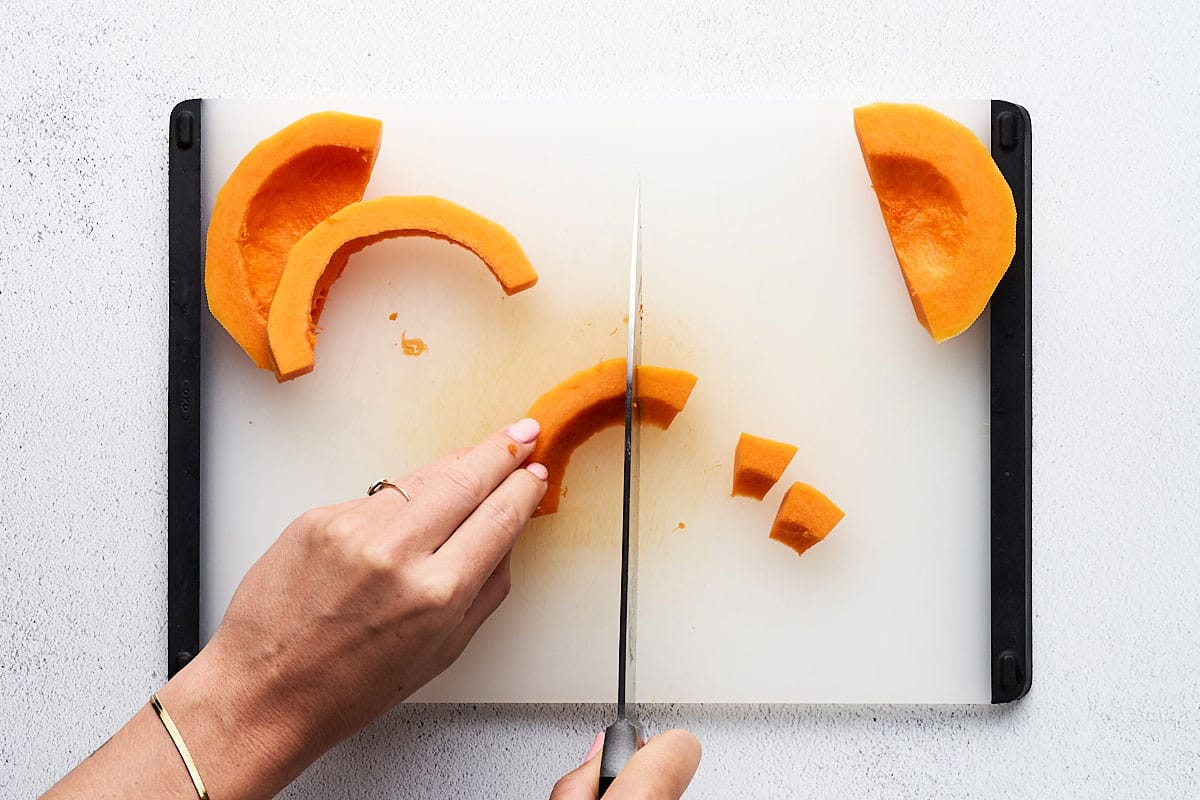
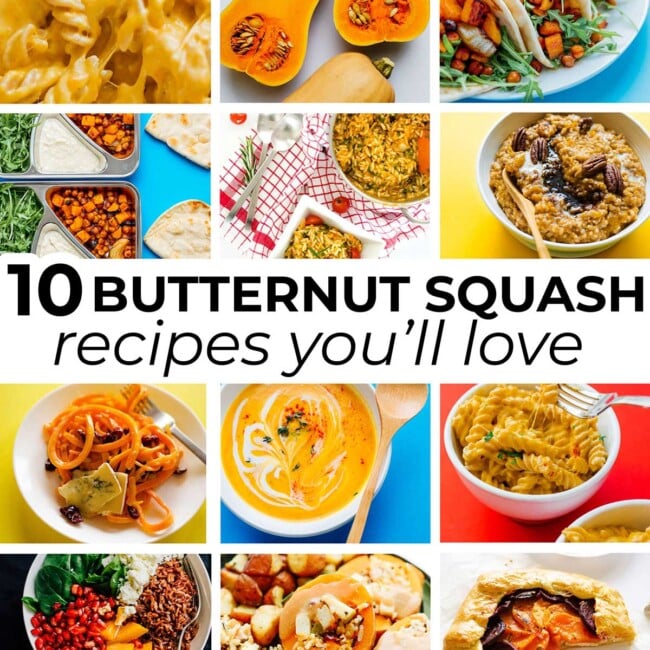
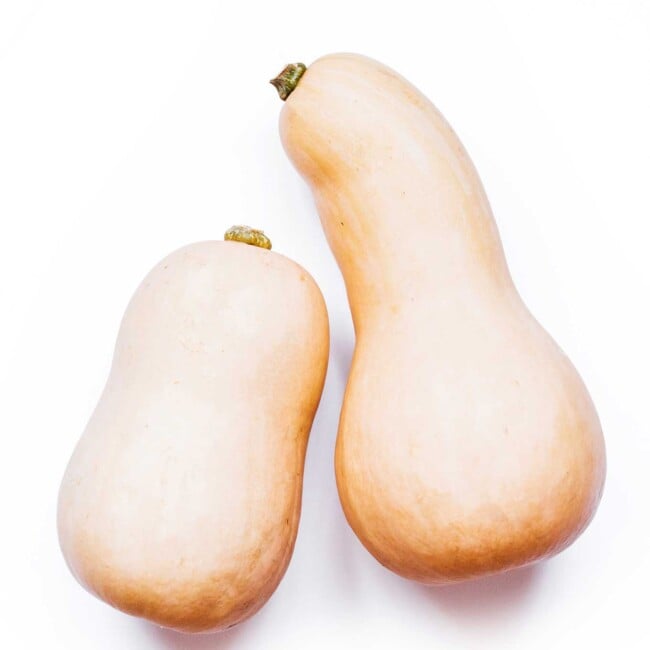
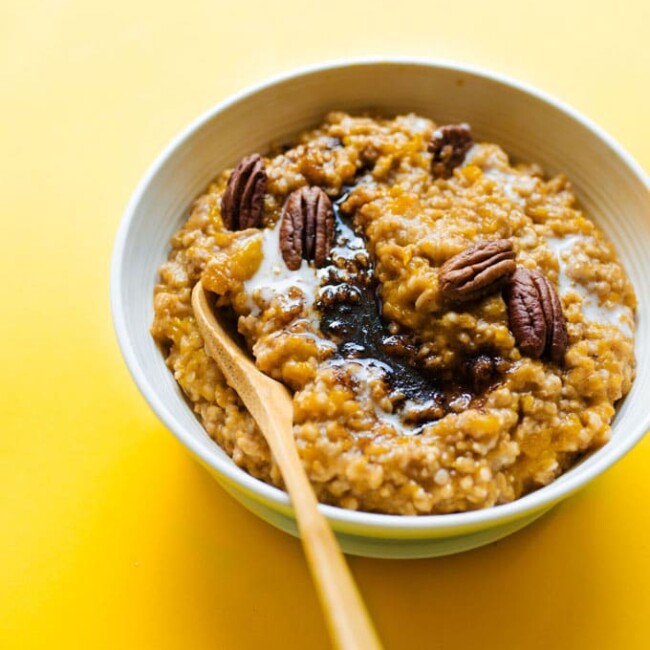

Leave a Comment